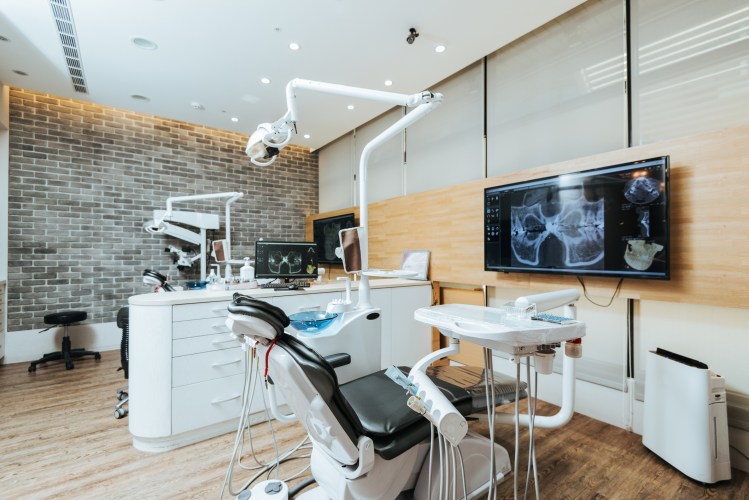Read Time:4 Minute, 42 Second
High inflation and rising interest rates are two economic hardships that have dental practice owners feeling hesitant about initiating practice sales. Practice valuations are more heavily scrutinized by today’s buyers because financing is not as easy to come by given the degree of market and economic volatility we have experienced in recent years.
This doesn’t necessarily mean that the market is slowing down; it just means that sellers need to be extra vigilant and proactive in building their practice’s value before initiating a sale. Below are some tips to improve the value of your practice and prepare for a successful sale in today’s market.
How to Build Value in Your Dental Practice Before a Sale
Your dental practice’s value goes beyond equipment and location. It lies in your financial performance, brand, and structure — all of which are critical factors to attract interested buyers.
1. Focus on increasing profitability
Strong financials are the most critical selling points to buyers. In the years leading up to a potential sale, focus on driving EBITDA and maintaining clear financial records that can paint a solid picture of your practice’s financial health, including gross margins, industry averages, and patient demographics. It is also critical to structure your compensation to reflect consistent expenses that depict your practice’s actual profitability.
2. Build a strong, time-tested brand
Strong financials are the most critical selling points to buyers. In the years leading up to a potential sale, focus on driving EBITDA and maintaining clear financial records that can paint a solid picture of your practice’s financial health, including gross margins, industry averages, and patient demographics. It is also critical to structure your compensation to reflect consistent expenses that depict your practice’s actual profitability.
Invest the time and dollars into establishing a brand identity that resonates with your community. This will ultimately allow for a smooth transition to a new owner while retaining patient loyalty. Besides brand identity, it is also essential to continually improve the patient and employee experience; these investments will naturally create operational efficiencies, improve team morale, and lead to better patient care, which are all vital to your brand reputation.
3. Develop a solid organizational structure
A well-organized practice is attractive to buyers because it makes the future transition in ownership easier. Start by clearly defining your staff’s roles and responsibilities, which will also have the dual benefit of allowing your team to function more efficiently in the short term. It is also important to standardize your procedures for billing, scheduling, and supplies to ensure smooth operations and maintain profitability. Don’t be afraid to embrace new tools and tech upgrades that can streamline and automate systems, which will also make the handover to a new owner less stressful.
Set Up Your Practice for a Successful Sale
Once you have built value in your business and are ready to put it on the market, it’s important to prioritize the following best practices:
1. Be realistic in the face of evolving economic conditions
Historically, the traditional valuation benchmark for dental practices has been 75% of total collections — but that might not hold in today’s market. Higher interest rates can have a big impact on a buyer’s cash flow; not to mention, dental school loan debt could further reduce their buying power. Even if your practice is highly profitable, external factors out of your control (for instance, geographic location) could affect your valuation. It’s important to partner with a qualified practice transitions advisor to understand your place in the market and set expectations that appropriately match the current climate and your unique circumstances.
2. Know your ideal buyer
A practice transitions advisor can also help develop a profile of your ideal buyer, including their motivations and expectations and how you can meet them. For example, a dental service organization (DSO) may offer a higher price for your practice, but they will expect you to have well-defined processes to ensure smooth operations even after ownership changes. Knowing what your ideal buyer expects will help refine the areas you need to prioritize to help ensure a successful sale.
3. Focus on boosting cash flow
Cash flow is the primary driver of practice valuation. You can improve it through:
Benchmarking: This is the practice of comparing your overhead to industry standards to identify areas for savings. Benchmarking can be an incredibly effective tool for illuminating opportunities to increase cash flow.
Vendor analysis: Review expenses for supplies and services to identify cost-effective alternatives.
Fee adjustments: Regularly review and adjust fees to keep pace with inflation.
Insurance renegotiation: Renegotiate insurance contracts or consider transitioning to a fee-for-service model for long-term profitability.
Ideally, dental practice owners who are looking to go to market should optimize their operations between 3-5 years in advance of a potential sale. During this process, it is crucial to assemble a professional team of advisors — including a dental CPA, a dental practice sales specialist, and a financial advisor — to ensure a successful transition.
If you’re thinking about selling your practice, contact a Patterson territory representative to get in touch with Aprio, our strategic dental CPA and advisory partner.
About the author
Kelli Henley, Dental Services Advisor at Aprio, LLP, specializes in helping dentists navigate transition planning and practice sales, valuations and purchases. She brings to her role extensive knowledge and experience in performing income tax compliance and business valuations specific to the dental industry. She enjoys building lasting relationships with her clients and coaching them on complex financial matters so they can manage their practices and navigate transitions in ownership with confidence.


